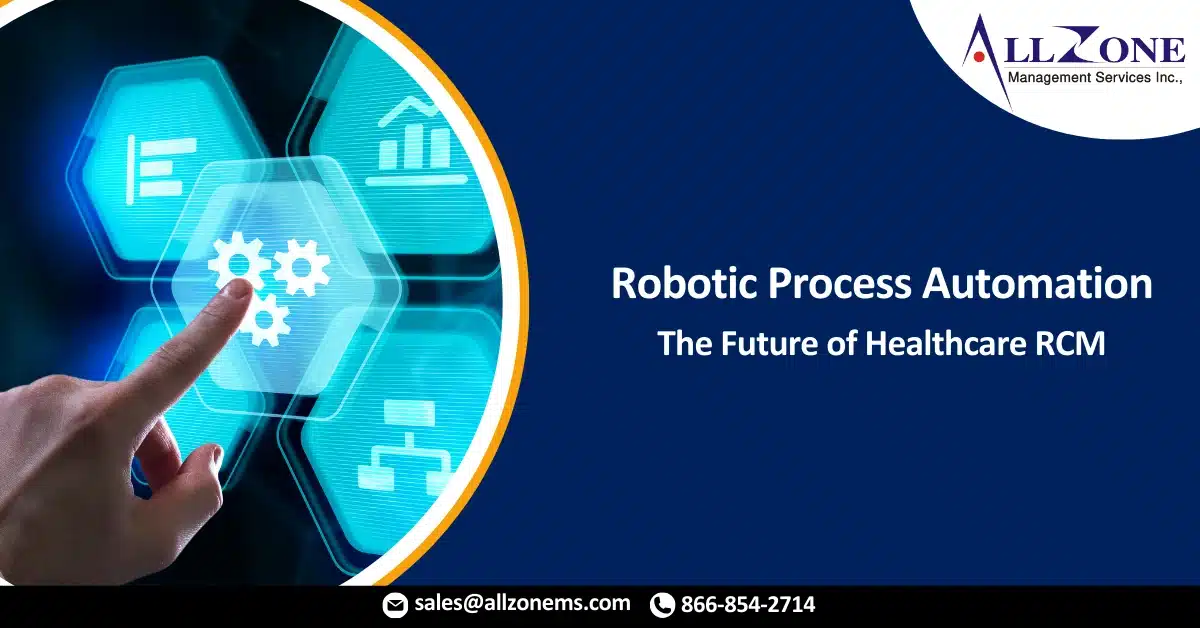As RPA’s value for revenue cycle continues to be explored, leaders need to go beyond the hype and determine a practical path to innovation that takes into account the organization’s capacity for innovation and the road map that will best take the organization to its desired digital destination.
A recent survey shows 15% of healthcare revenue cycle leaders plan to invest in robotic process automation (RPA), up from zero a year earlier. But is now the right time for RPA for your revenue cycle department—and if so, where should your organization focus RPA to gain the maximum cost benefit?
RPA holds intriguing potential for revenue cycle. It mimics the actions of revenue cycle staff during insurance verification, prior authorization, claims administration and follow-up, and account segmentation while eliminating human error. RPA also can work on accounts 24/7 and complete tasks at a fraction of the time it takes staff to perform the same work. The impact: increased accuracy and productivity, lower labor costs and a stronger bottom line.
But RPA isn’t a silver bullet—especially if revenue cycle leaders haven’t thought through the ways in which RPA might affect their workforce, the support needed from internal or external IT resources, their short-term and long-term goals, and their strategy for implementation.
Going Beyond the Hype
RPA is firmly within the future of healthcare revenue cycle, but whether it’s ready for prime time in hospitals and health systems depends largely on their foundation for innovation, their culture, and the ways in which leaders approach digital integration.
How can healthcare revenue cycle departments develop an approach to RPA that provides value and complements their innovation vision? Here are three questions revenue cycle leaders should ask.
How will you engage revenue cycle staff in an RPA-enabled environment?
As use of RPA for highly manual processes decreases the need for human intervention, healthcare revenue cycle leaders must have a plan for directing existing talent to more value-added work, such as:
- Supporting revenue integrity—the top area of focus for revenue cycle leaders—by pairing staff with physicians and clinicians to strengthen clinical documentation and optimize billing-related workflows, such as charge capture
- Engaging patients in financial discussions before the point of care
- Aligning the work of these staff with efforts to elevate performance under value-based contracts
But fear of the unknown (e.g., cost, adoption, effectiveness) can derail RPA initiatives before they demonstrate value. A Gartner report warns that when employees aren’t certain of their future in an RPA-enabled environment, this increases the potential for data or process tampering that can skew results and limit RPA’s value.
Before moving forward with RPA, healthcare revenue cycle leaders must assess where digital innovation will impact staff. They should then develop a plan for communicating the “whys” of RPA process improvement and upskilling team members with highly manual processes to assume new roles in an automated setting. In doing so, leaders not only assure staff of their value in a more digital environment but also pave the way for strong results.
Determine the internal resources needed to support RPA-driven revenue cycle improvement.
This conversation comes down to more than a “Build or buy?” analysis, although given that 62 percent of healthcare revenue cycle leaders say the challenges of EHR adoption have been equal to or outweigh the revenue cycle gains they have achieved, it’s clear that internal IT resources already are stretched. The conversation also requires discussion of attended-versus-unattended support for RPA. For example:
- To what extent will human intervention be required to trigger RPA to run for front-office tasks, such as prior authorization and insurance verification (attended support)?
- When will RPA run automatically, such as for back-office processes like claim follow-up (unattended support)?
The Gartner report suggests the demand for attended support will likely increase as RPA learns from human actions and as RPA scripts are dynamically created for specific processes. IT and revenue cycle support also will be needed to:
- Map and validate business processes
- Determine where RPA can best be used to increase efficiency and minimize errors
- Handle exceptions (scenarios that cannot be dealt with through RPA alone)
- Reengineer repetitive processes so that RPA may not be needed. One example of this is using EDI X12 276/277 to integrate healthcare claim status requests and responses. This may require less ongoing human intervention than RPA.
These considerations require not only IT and revenue-cycle specific expertise, but also a governance structure that ensures RPA receives top-level leadership support and day-to-day oversight and that staff receives the right training to support optimal performance.
How will you measure results?
It’s critical that revenue cycle leaders define the results they hope to achieve through RPA before it is implemented. They should also work with IT experts to determine whether these results are realistic—and in what timeframe they can be achieved.
For example, it’s important to know how much faster RPA can perform revenue cycle-specific tasks, especially when estimates of RPA efficiency range from five to 10 times faster to up to 20 times faster, depending on the source. Revenue cycle leaders also must understand how the results may improve between year one and year two and beyond, given the learning curve in mimicking human activity for specific processes and the introduction of process improvements.
Key performance improvement measures may include:
- Increased clean claims rates
- Decreased days in accounts receivable
- Decreased denials related to prior authorization or benefits and eligibility
- Operating cash flow
For More Information: https://medcitynews.com/2020/08/robotic-process-automation-the-future-of-healthcare-revenue-cycle-management/

